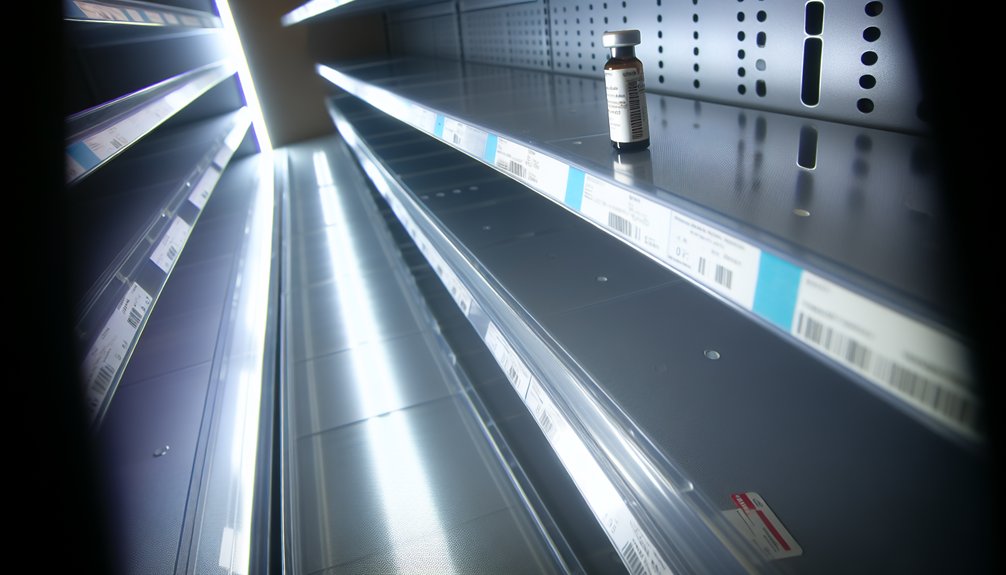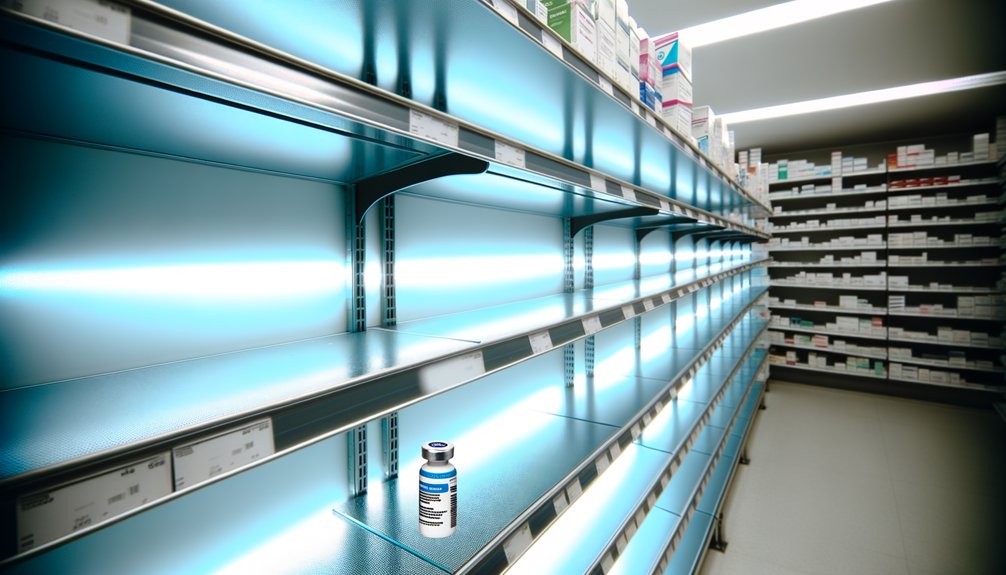As of early 2025, the diabetes medication shortage is easing, bringing relief to many patients. After months of struggle, access to essential treatments like Ozempic and liraglutide is improving. Patients have faced significant challenges, from delays and increased costs to the stress of uncertainty. However, hope glimmers as supply stabilizes, with alternatives like Rybelsus and Mounjaro contributing to better availability. This journey reminds us of resilience in tough times, and more insights await just ahead.

Have you ever wondered how something as essential as diabetes medication could become so hard to find? The reality is that as of mid-2025, over 226 active drug shortages plague the U.S. healthcare system, and many of these shortages involve vital medications for chronic conditions like diabetes. Among the most affected are GLP-1 receptor agonists, which became scarce starting in late 2022 and have continued their struggle through 2024.
These medications are pivotal for managing type 2 diabetes, yet patients often find themselves in a frustrating battle for access. Imagine being a patient who relies on injectable diabetes drugs, only to discover that these lifesaving treatments are in short supply. During peak shortages, access is reserved for those already on treatment, leaving newcomers in limbo. The problem is compounded by the rise in off-label use of these medications for weight loss, which has outstripped supply. The development of oral GLP-1 drugs could help address supply challenges by offering alternative treatment options.
Patients relying on essential diabetes medications face frustrating shortages, with newcomers left in limbo amid rising off-label demand for weight loss.
It’s like a concert where only a few lucky fans get the tickets while everyone else is left outside, hoping for a miracle. Recent efforts have started to turn the tide. As of early 2025, the shortages of several GLP-1 drugs, including Ozempic and liraglutide, have reportedly been resolved. Patients can now breathe a little easier, knowing that these essential treatments are becoming more available. Adequate supply of Rybelsus and Mounjaro as new treatment options has also contributed to improving access.
However, the journey hasn’t been easy. Many patients have faced delays, increased costs, and even tougher challenges managing their diabetes without their medications. While the market is stabilizing, vigilance is still required. The World Health Organization has alerted patients to beware of counterfeit medications.
It’s a reminder that the path to better health is often lined with obstacles. Yet, through increased transparency and efforts to diversify manufacturing, there’s hope on the horizon. Patients can look forward to more consistent access to the treatments they need, allowing them to take control of their health once again.
